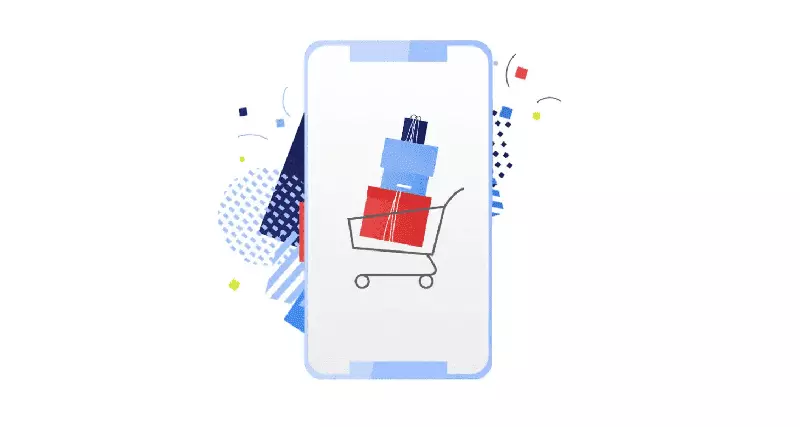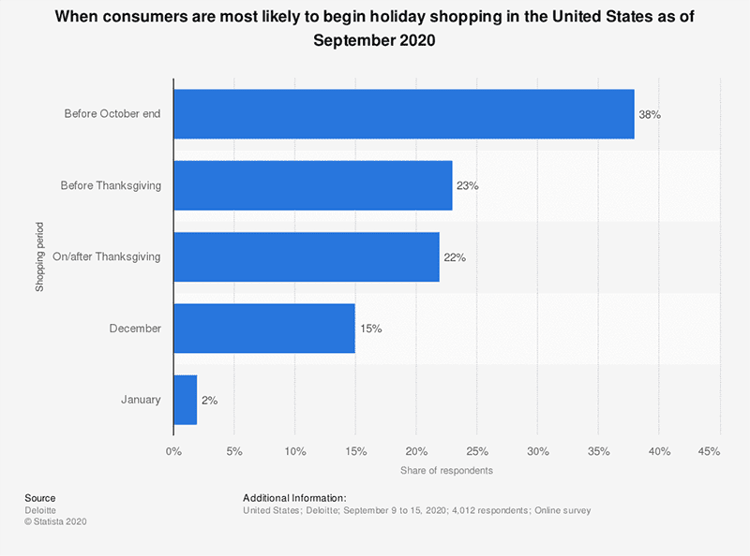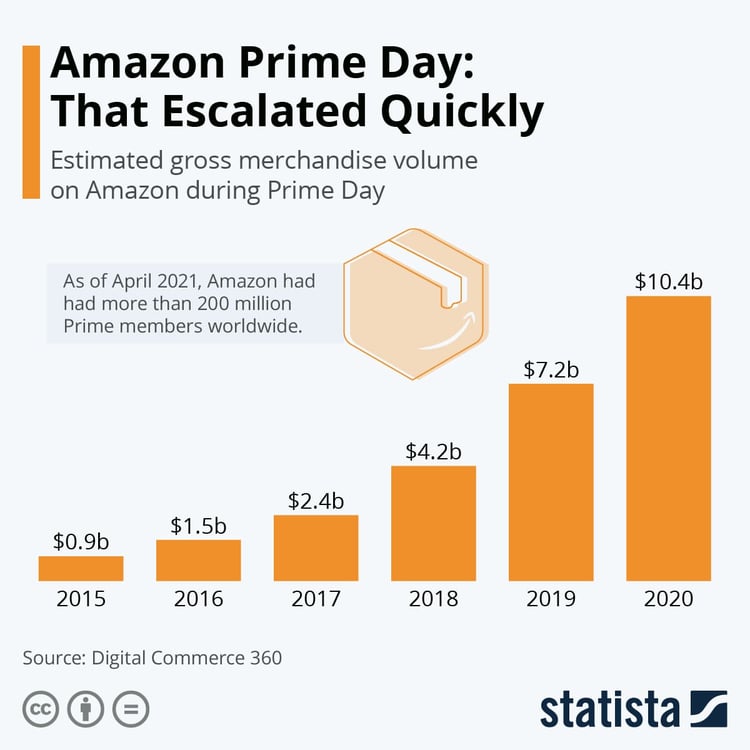
Planning a calendar for a B2C retailer is both obvious and laborious.
The former, because prepping your online store for Black Friday 2020 sounds almost like a cliché. The latter, because we know how herculean a task that is.
We’ve all heard that failing to plan is planning a failure. With the groundwork we will lay out in this article, planning your e-commerce activities for 2020 upfront can pay off big time on Amazon, Etsy, eBay, or other channels.
So, on top of your standard sales planning, like launching new lines of products or adding collections and catalogs, there are more seasonality tips you can’t overlook.
COVID-19 isn’t canceling holidays
Although consumers worldwide are more prudent and frugal in their spending, they are still willing to keep their wallets open.
Though many of us turned from deal-seekers into cautious and efficient shoppers, this fall/winter holiday unwaveringly is predicted to be a huge opportunity for both buyers and retailers.
The 2020 spending spree started as early as October and will go on until January when many consumers will probably redeem their received Christmas gift cards.

On the other hand, many consumers globally (38% according to Deloitte) are willing to spend less this holiday season.
As a silver lining, since many consumers saved money on traveling and experiences spending, this could leave them more money to be spent on Christmas gifts.
All in all, it might mean that the competition over the buyer for the rest of 2020 will be fiercer.

Relevant offers throughout the year
Planning your calendar for 2020 is an expression of your business strategy.
Here, on top of implementing new systems or tools to your stack, venturing into new niches, and racing to the top search positions, strategizing your sales for special days and seasons can put you in the driver’s seat with your rivals occupying the back.
So, tap into the highlights and festivities of the year. Offering romance-themed items in early February or bargains during back-to-school weeks in August will make you appear relevant to your customers.

Important tip: Boost your sales through a sense of urgency. Bring a methodical approach to your sales calendar and they will love you for the special offers for items that they need at certain times.
What days to target?
Focus your special offers around these four categories of holidays:
- Major holidays. These are globally observed special days like St. Valentine’s Day, Halloween, or Christmas.
- Shopping holidays. Legendary profits are made on Black Fridays or Cyber Mondays. Amazon Prime Day is another phenomenal event that has arrived. Expect more likewise opportunities to emerge, especially during periods when e-commerce traditionally takes a slower pace.
- Geographical holidays. Bear in mind that New Year begins in January in the US, but in mid-February in China. Mother’s, Father’s, or Children’s Days all take place differently around the world. There are other massive days that are geographically bound, like Chinese Singles’ Day (the anti-Valentine’s celebration) with record online sales and extravagant accompanying events year in and out or mid-fall Moon Festival.
- Quirky holidays. If you offer lingerie, offer your customers free shipping on Underwear Day in the US (August 5th). Computer hardware stores can offer discounts on Fibonacci Day (not surprisingly on November 23rd). Researching hashtag holidays (#NationalHatDay, #PieDay, etc.) will give you plenty of ideas to start from. Choose a day that resonates with your business, advertise it on your Social Media and your customers will love to see your off-the-wall side.

Use seasonality to increase sales
Tap into seasonality and drive online sales using some of these ideas.
- Build your sales calendar for longer periods and be ready way earlier. Investing in a PPC campaign only a few weeks before an important time may not increase your sales. So think months, not weeks.
- Be creative in how you would like to surprise or amuse your customers. Play your imagination card and pull off a holiday campaign that is memorable.
- Use analytics. Consider the data from previous years, look for patterns and let the insight you gather tailor your sales and marketing.
- You can also win customers if you make their lives easier through smart and well-timed recommendations for holiday gift ideas. For example, product catalog managers can categorize their product portfolio into Useful, Funny, Relevant, Homemade, or other segments.

- Have the capacity for a significant wave of purchases. The last thing you want is to have your server go down, be short of staff, or go out of stock.
- Be agile. Sometimes a non-standard seasonality opportunity will surge. For example, a weather-induced factor could be involved. Be prepared to meet the unexpected demand.
- Update your product information and media files to add a festive feel to your product pages. Here a product information management (PIM) solution which handles an array of assets such as pdfs, images and videos, or customer reviews comes in handy.
Important tip: Update your product information effectively with a PIM solution A big-picture decision: consider a PIM solution, capable of updating, retrieving, and sending product information at the drop of a hat to all the sales channels, including eCommerce platforms, marketplaces, and physical stores
Embracing seasonality is a process. Gradually build your sales around it but remember that getting it spot-on all year long may be unrealistic. So, prioritize your efforts, switch on your learning mode, and experiment.

DOWNLOAD FREE E-BOOK
The no. 1 feature that drives purchases is product content
Check if you need a PIM system to manage your product content effectively.
Interested in product information management, but not sure where to start? Contact our PIM advisors to learn how a PIM solution can boost your eCommerce strategy and get started with a personalized plan tailored to your business challenges.
You might also like

Our Best Picks on Bluestone PIM Blog for 2020

How Do Large Retailers Manage Product Content?



